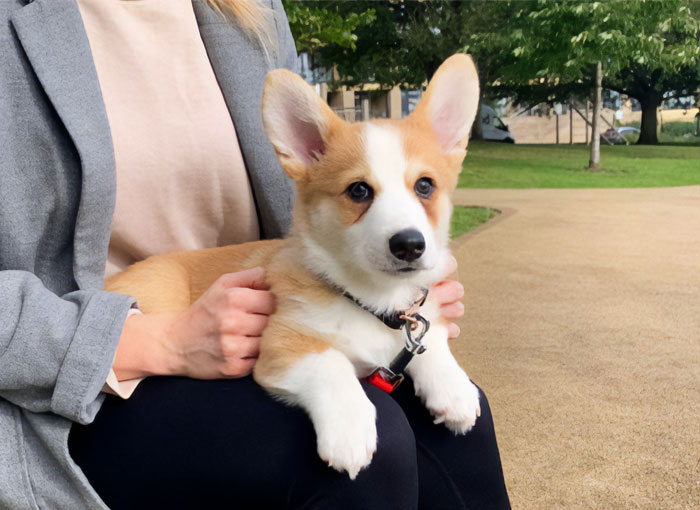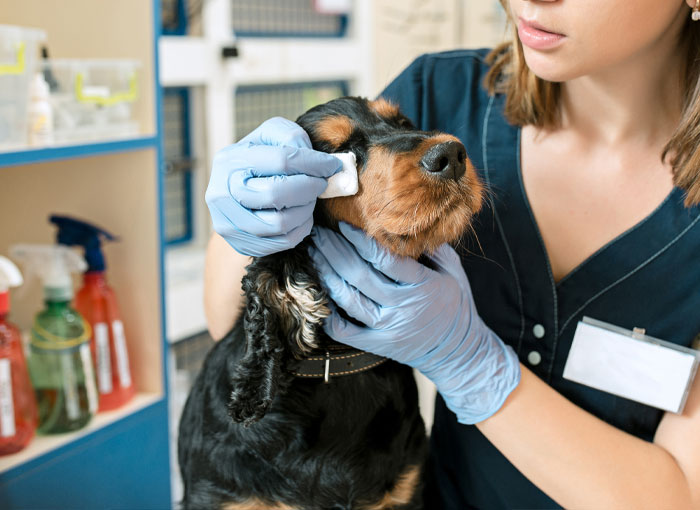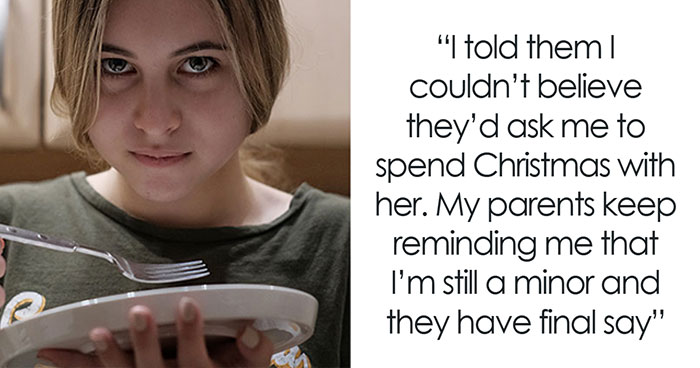Have you seen those reddish-brown marks under your dog’s eyes and wondered about them? These marks are not just a cosmetic issue – they’re a window into your dog’s health and well-being. Dogs, especially those with lighter fur, can get these stains, which don’t harm them but can change how they look. And sometimes, these marks can point to health issues. While often associated with certain dog breeds like Maltese or Shih Tzus, any dog can have these stains. Different things can cause them, like:
- Tear stains in dogs can signal health issues beyond cosmetic concerns.
- Certain breeds are more prone to tear stains due to facial structure.
- Blocked tear ducts, allergies, and diet can all contribute to tear staining.
- Regular grooming, high-quality diet, and clean water can prevent tear stains.
- Probiotics may be safer and more effective than antibiotics for treatment.
- What they eat
- The water they drink
- The shape of their face
But don’t worry, there are good ways to treat and stop these stains, ensuring your furry companion stays happy & healthy.
This guide will help you understand:
- Why do tear stains happen
- How to treat them
- And how to keep them from coming back
So let’s learn how to help your furry friend stay healthy and free from tear stains!
The information provided herein is for informational purposes only. Please refer to our disclaimer for more details..
Understanding Tear Staining in Dogs
Tear stains are those reddish-brown marks you often see near a dog’s eyes. They’re a usual worry for pet owners. These stains show up more on dogs with light fur, like Bichon Frises or Maltese. The main reason for these stains is epiphora – which is when tears spill over because they’re not draining right.
Normally, tears should drain into the nasolacrimal duct, but if this duct is blocked or underdeveloped, tears end up outside the eyes. And this leaves a colored mark. This color comes from porphyrins, iron-containing molecules produced when the body breaks down red blood cells. Porphyrins are naturally excreted in tears, saliva & urine. However, they’re more visible in dogs with light fur.
Some breeds get tear stains more, especially those with short noses, flat faces, and big eyes or shallow eye sockets, like:
- Bulldogs
- Boxers
- Lhasa Apsos
- Pekingese
- Pugs
- Bullmastiffs
- Boston Terriers
- Shih Tzus
- Maltese
- Poodles
- Cocker Spaniels
- Schnauzers
- Dachshunds
- Cairn Terriers
- West Highland White Terriers
- Samoyeds
- Bichons Frises
- Labrador Retrievers
- And Golden Retrievers
In these breeds, the way their eye sockets and tear ducts are made doesn’t help tears drain well, so they spill over. Usually, this isn’t harmful. But it’s important for pet owners to know that too many tears can sometimes mean health problems or lead to infections if not cleaned. So regular cleaning & seeing a veterinarian if you’re worried is the best way to keep your dog comfortable and healthy.
What Causes Tear Stains On Dogs
Tear stains on dogs have multifaceted causes. Contrary to popular belief, they’re often not due to excessive tear production, but rather a combination of physical and environmental factors.
- Anatomical Factors: Some dogs, like Shih Tzus, Lhasa Apsos, and Maltese, get more tear stains. This is because of their facial shapes, like shallow eye sockets or short noses – which make tears spill over. And, also, if their eyelids are shaped differently, tears can run onto the face instead of going through the tear ducts.
- Eyelash and Hair Issues: Dogs with long hair around their eyes can have problems. Hairs or eyelashes that grow wrong can bother the eye & block tear ducts. This leads to more tears and stains. Entropion, a condition where eyelids curl inward, or ectopic eyelashes that rub against the cornea, also contribute to this issue.
- Blocked Tear Ducts: The small holes for draining tears, known as puncta, can get blocked by infections or scars. This stops tears from draining right and makes them spill over, causing stains.
- Allergies and Irritations: Like humans, dogs can also be allergic to things like:
- Pollen
- Grass
- Or certain foods.
Allergies can make the area around their eyes swell – which blocks tear ducts. And, being around irritants like smoke or some shampoos can also cause more tears & stains.
- Teething in Puppies: When puppies are growing their teeth, they might make more tears. And since their faces are still developing, this can lead to tear stains.
- Health Conditions: Sometimes, tear stains can show there’s a health problem. For Example: Brown stains with a bad smell might mean a yeast infection. If you see changes in the color or smell of your dog’s tear stains, it’s good to see a vet.
Knowing these causes is important for dog owners. While you can’t change genetics, you can manage allergies, keep good hygiene, and get vet help for health problems. This can help reduce the severity of tear stains in dogs.
Tear Stains Diagnosis in Dogs
If your dog has lots of tear stains, it’s important to see a vet. The vet will do a full eye exam. The process involves:
- A comprehensive ophthalmologic evaluation – including fluorescein staining to check for corneal issues
- And Schirmer tear tests to measure tear production.
Finding the exact cause is important. As it helps decide the right treatment or surgery to fix the tear stain problem effectively.
Tear Staining Treatment in Dogs
Treating tear stains depends on what’s causing them. If a blocked tear duct is the problem, vets might need to clean it out or make it bigger narrowed by chronic issues like irritation or injury. This is done under anesthesia.
But, if tear stains are due to the dog’s facial shape, like normal tears spilling over – it’s harder to treat. One way is with low-dose antibiotics, but this isn’t really safe & not recommended. Because it can lead to the potential development of antibiotic-resistant bacteria.
A better choice is probiotics. They can help reduce or even get rid of tear stains without the bad side effects of antibiotics. This is a safer way to handle tear stains. So always talk to your vet to find the best treatment for your dog’s tear stains.
How to Remove Dog Tear Stains At Home
Before you begin, it’s crucial to ensure no underlying medical conditions are causing the stains with your veterinarian’s help. And once health issues are excluded, you can try various over-the-counter options and home remedies. Be careful when cleaning your dog’s face – as you might need to try a few ways to see what works best.
- Using Specialized Products: You can find many over-the-counter products to clean tear stains. These include eye wipes and washes like:
Use these by gently wiping away from the eye with the product applied to cotton balls or soft wipes. But seek veterinary advice before using new products, especially if your dog already uses eye medicine. And, always dry your dog’s face with a clean towel after cleaning. If stains are really severe, you might need to trim the fur.
- Routine Cleaning: It’s important to keep your dog’s face clean and dry. Use a warm washcloth & baby shampoo to wash their face and around the eyes. And, after washing, dry the area well with a towel to stop skin problems like ulcerative dermatitis. Wiping the corners of their eyes daily with a warm, damp soft rag or paper towel can also help. This can be part of your daily care or done by a groomer.
- Alternative Solutions: For a natural approach, using contact lens solution with boric acid can help lighten stains. It works by reacting with iron (oxidizing it) in porphyrins. Be careful to keep it out of your dog’s eyes. Additionally, natural options like coconut oil can also be good for their skin and help with tear stains. Just make sure to dry the area well after cleaning to avoid yeast infections.
Note: Be careful with products containing Tylosin – an antibiotic. This is controversial and not recommended due to unpredictable results. It can be risky and might lead to drug resistance. Always choose safe options and talk to your vet before trying new treatments for tear stains on your dog.
Tips to Prevent Tear Staining
To stop tear stains in dogs, especially in breeds that get them a lot, you need to groom them regularly & watch their diet and environment. Here are some good ways to keep tear stains away:
- Regular Grooming: Consistently keeping the hair around your dog’s eyes trimmed is crucial. It stops hair from bothering their eyes and making more tears. So a daily grooming routine, especially around the face – can help a lot in reducing stains.
- High-Quality Diet: What your dog eats matters. For some dogs, eating grain-free food without things like corn or wheat is best. As, these can cause allergies, which lead to excessive tearing. Choose food that’s healthy and nutritious to keep your dog healthy and make fewer tears.
- Filtered Water: Tap water with lots of minerals, like iron and magnesium, can cause tear stains. Using filtered, distilled, or reverse-osmosis water can help. This simple switch helps reduce the minerals that could be exacerbating the staining.
- Appropriate Water Bowls: Don’t use plastic bowls. They can grow bacteria and add to staining. Use stainless steel or ceramic bowls instead. They’re cleaner and don’t have bacteria.
- Supplements: Think about using supplements made to lower porphyrin in tears, which causes stains. The following products are popular choices:
And remember, results may vary, and it’s important to find what works best for your dog.
- Dry Moist Areas: Dry your dog’s mouth area after they drink to stop dampness, which can lead to stains. Using absorbent materials like paper towels can help. Additionally, putting cornstarch gently under the eyes and around the muzzle can also keep these areas dry.
- Avoid Chemicals and Allergens: Watch out for things in the environment that can bother your dog’s eyes – like allergens & chemicals. These can cause more tears and stains.
Every dog is different, so you might need to try a few of these methods to see what works. Being consistent and patient is important to stop tear stains in dogs.
Final Thoughts
Understanding and taking care of tear stains in dogs is a big part of being a good pet owner. As we’ve seen, these stains can mean more than just a change in looks. They can point to health issues. So being aware and active in caring for your dog can keep them comfortable & healthy. And remember, things like regular grooming, good food & changing their environment are key in stopping & treating tear stains. As every dog is unique. And finding what works best for you may take some time and patience. So, take on the responsibility of caring for your dog – knowing that what you do really helps your furry friend.
378views
Share on Facebook
 Dark Mode
Dark Mode 

 No fees, cancel anytime
No fees, cancel anytime 







 Image credits:
Image credits:  Image credits:
Image credits:  Image credits:
Image credits: 










































-2
0